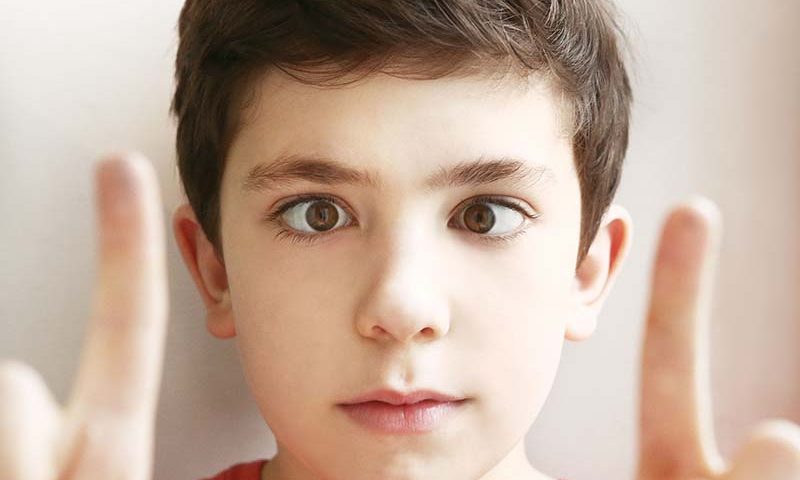
Having good binocular vision is very essential in carrying out different daily visual demanding tasks such as reading, playing sports and driving. It helps people judging distance between objects (depth perception) precisely, and drives the eyes to move effectively and smoothly together. Binocular vision develops rapidly in the first few years after birth, therefore it is very important to check it at very young age to ensure appropriate treatment is provided if there are any abnormalities. Binocular vision disorders can be classified into manifest and latent types. This entry will talk about the manifest type, followed by the latent type in next entry.
Manifest Binocular Vision Disorders:

Strabismus (Eye Squint):
There are two common types of strabismus: Esotropia (Eyes turning in) and Exotropia (Eyes drifting out). Due to its manifest nature, parents most often may notice it by themselves. Early management is needed as it will impair children binocular vision development and cause loss of stereoscopic vision (3D vision). If left untreated, there is high chance for developing amblyopia (Lazy eyes) especially for cases where the strabismus is happening in one eye constantly. The prevalence of strabismus is approximately 3%-6% in population.
Esotropia Management (Brief): For kids having large angle congential esotropia, medical reports suggested that surgery at very young age (between 1-2 years of age) is needed in a bid to preserve binocular vision and stereopsis development. 1 For esotropic kids with high hyperopia, hyperopic glasses are used as a first line treatment for straightening the eyes.
Exotropia Management (Brief): Exotropia usually happens intermittently, therefore surgery is often not very urgent at very young age except for large angle cases. Visual therapy is also effective in reducing the frequency of eye turn for intermittent cases with moderately large angle of deviation. However, visual therapy requires both parents and children to highly cooperate with the optometrists, and practise eye exercises regularly in order to succeed.

In conclusion, both estorpia and extropia will affect children binocular vision development. If parents notice that his/her kid frequently cannot focus on objects with both eyes together, they should bring him/her to have comprehensive eye examination as soon as possible. Furthermore, some small angle strabismus is rather subtle and hardly detected by parents themselves, therefore it is necessary to have your children eyes checked annually starting from 3 years of age.
By Paco Chan, Registered (Part I) Optometrist
Eyecare information by Swisscoat Vision Centre
Address : G/F Yuen Yick Building, 27-29 Wellington Street, Central, Hong Kong
Appointment :+852 3579 4763
Website : www.swisscoat.com
